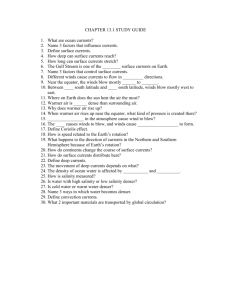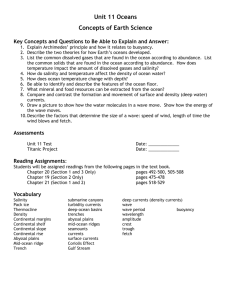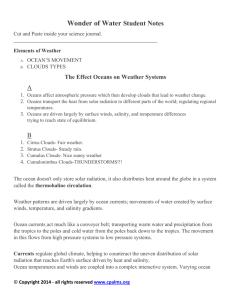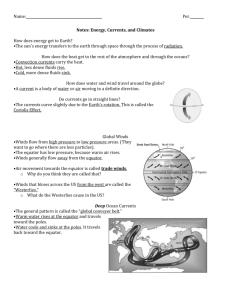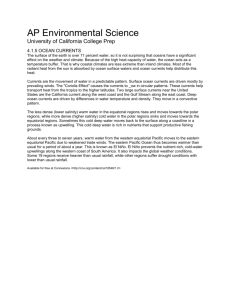CHAPTER 13 - Cloudfront.net
advertisement
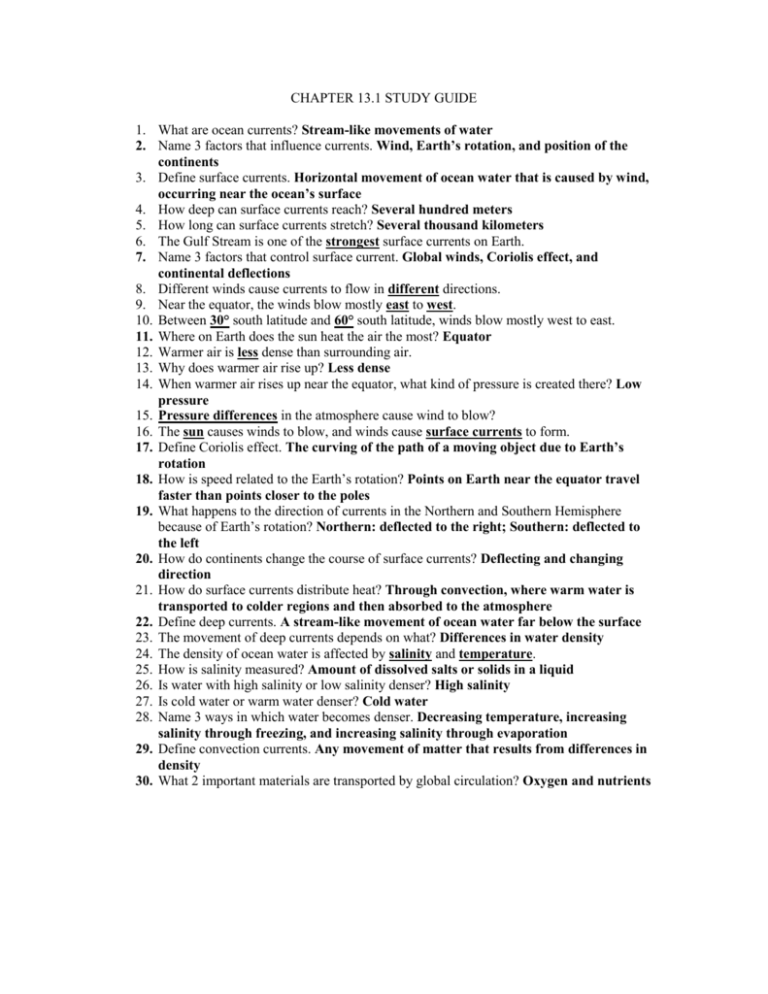
CHAPTER 13.1 STUDY GUIDE 1. What are ocean currents? Stream-like movements of water 2. Name 3 factors that influence currents. Wind, Earth’s rotation, and position of the continents 3. Define surface currents. Horizontal movement of ocean water that is caused by wind, occurring near the ocean’s surface 4. How deep can surface currents reach? Several hundred meters 5. How long can surface currents stretch? Several thousand kilometers 6. The Gulf Stream is one of the strongest surface currents on Earth. 7. Name 3 factors that control surface current. Global winds, Coriolis effect, and continental deflections 8. Different winds cause currents to flow in different directions. 9. Near the equator, the winds blow mostly east to west. 10. Between 30° south latitude and 60° south latitude, winds blow mostly west to east. 11. Where on Earth does the sun heat the air the most? Equator 12. Warmer air is less dense than surrounding air. 13. Why does warmer air rise up? Less dense 14. When warmer air rises up near the equator, what kind of pressure is created there? Low pressure 15. Pressure differences in the atmosphere cause wind to blow? 16. The sun causes winds to blow, and winds cause surface currents to form. 17. Define Coriolis effect. The curving of the path of a moving object due to Earth’s rotation 18. How is speed related to the Earth’s rotation? Points on Earth near the equator travel faster than points closer to the poles 19. What happens to the direction of currents in the Northern and Southern Hemisphere because of Earth’s rotation? Northern: deflected to the right; Southern: deflected to the left 20. How do continents change the course of surface currents? Deflecting and changing direction 21. How do surface currents distribute heat? Through convection, where warm water is transported to colder regions and then absorbed to the atmosphere 22. Define deep currents. A stream-like movement of ocean water far below the surface 23. The movement of deep currents depends on what? Differences in water density 24. The density of ocean water is affected by salinity and temperature. 25. How is salinity measured? Amount of dissolved salts or solids in a liquid 26. Is water with high salinity or low salinity denser? High salinity 27. Is cold water or warm water denser? Cold water 28. Name 3 ways in which water becomes denser. Decreasing temperature, increasing salinity through freezing, and increasing salinity through evaporation 29. Define convection currents. Any movement of matter that results from differences in density 30. What 2 important materials are transported by global circulation? Oxygen and nutrients



